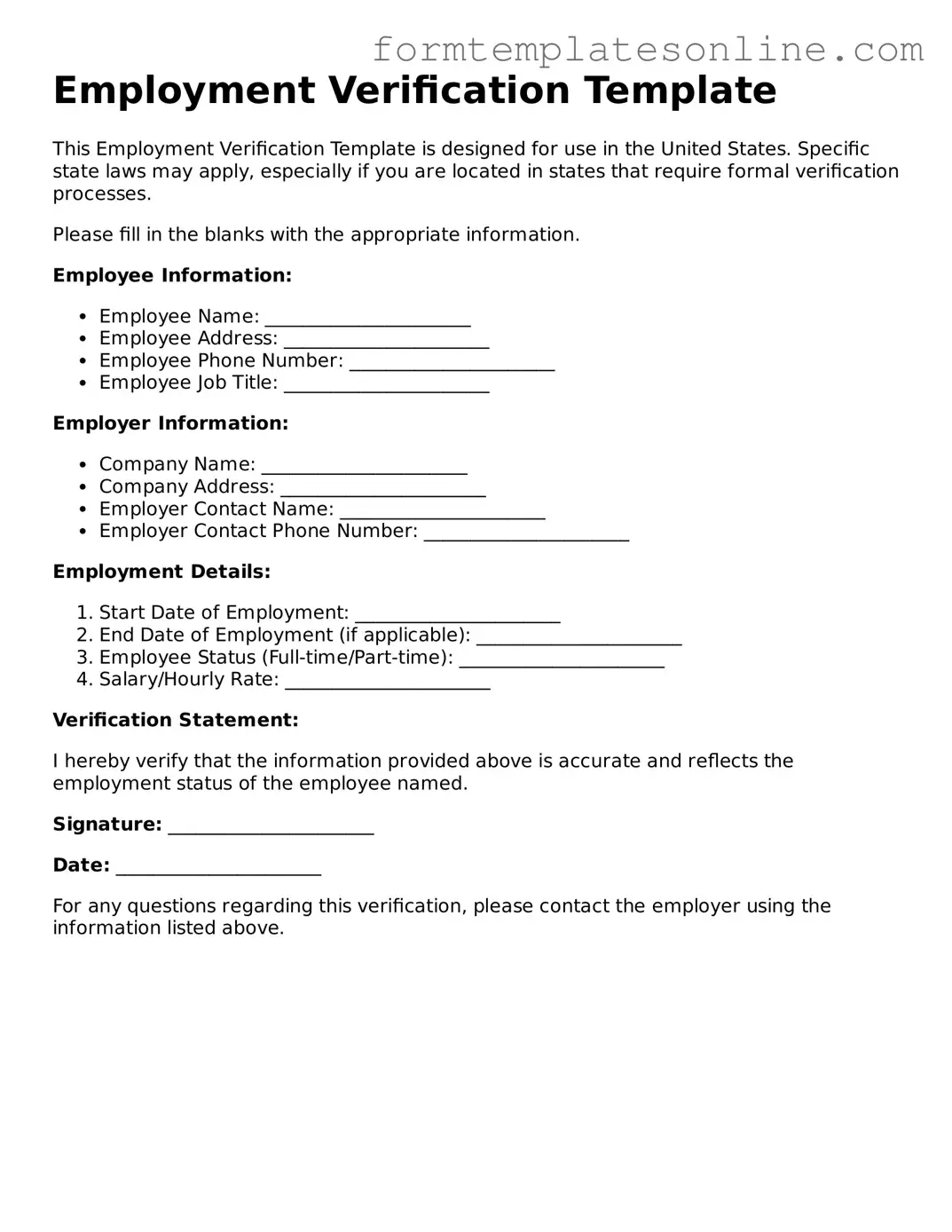What is an Employment Verification form?
An Employment Verification form is a document used to confirm an individual's employment status, job title, salary, and duration of employment. Employers often request this form when a current or former employee applies for a loan, rental agreement, or new job. It serves as proof of income and employment history.
Who typically requests an Employment Verification form?
Various parties may request an Employment Verification form. Common requesters include potential employers, landlords, and financial institutions. They use the information to assess an individual's reliability and financial stability before making decisions about hiring, renting, or lending.
How do I fill out an Employment Verification form?
To fill out an Employment Verification form, provide accurate information about the employee's job title, employment dates, salary, and any other requested details. Ensure that you have the employee's consent to share this information. It's essential to double-check for accuracy before submitting the form to avoid any misunderstandings.
What should I do if my employer refuses to complete the form?
If your employer refuses to complete the Employment Verification form, consider discussing the situation with them. Explain why the verification is necessary and how it can benefit both parties. If they still decline, you may need to seek alternative methods to verify your employment, such as pay stubs or tax documents.
Is there a fee associated with obtaining an Employment Verification?
Typically, there is no fee for completing an Employment Verification form. However, some employers may have policies that require payment for processing or additional services. It's best to check with your employer's HR department to understand their specific policies regarding employment verification.
How long does it take to receive the completed Employment Verification form?
The time it takes to receive a completed Employment Verification form can vary. Generally, employers aim to process these requests within a few business days. However, it may take longer if the request is made during a busy period or if additional information is needed. Always allow sufficient time for processing when making your request.
